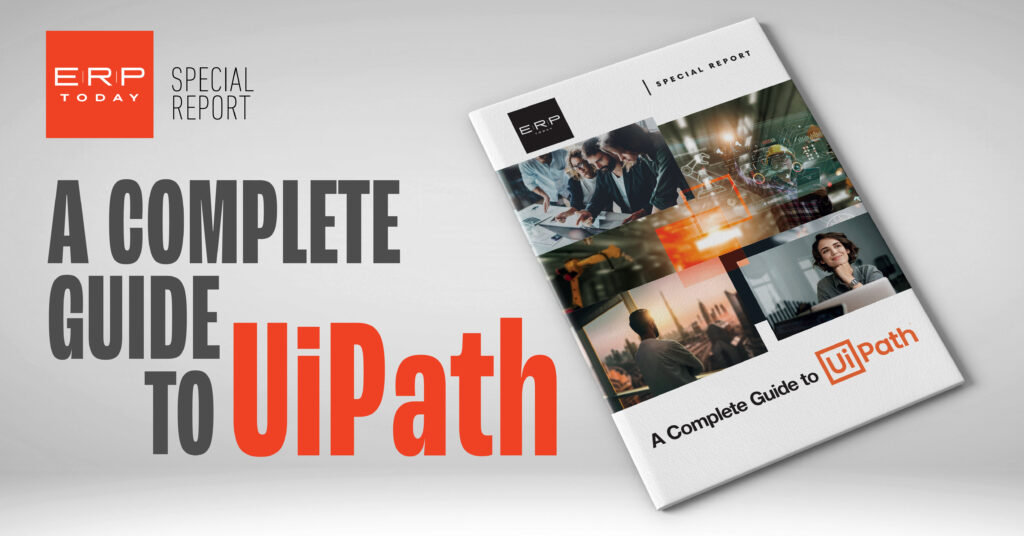Automation has now become a strategic platform for most enterprise companies. It frees humans of manual, tedious tasks, allowing them to focus on higher value work. According to a study by UiPath, 86 percent of executives surveyed believe automation will enable their employees to focus on more creative work — and spend less time on mundane, repetitive, time-consuming tasks.
As platform capabilities have expanded since the beginnings of robotic process automation (RPA), automation platforms are increasingly used to implement new business ideas, processes and capabilities as well. Automation delivers powerful, measurable return; is an investment in the well-being of employees; and is a strategic platform to help companies transform their processes.
UiPath Business Automation Platform has a broad platform vision that spans personal productivity and enterprise processes, helping make digital transformation a reality. The UiPath automation platform has three layers that work together to achieve this goal. Those layers are summarised as: discover, automate, and operate.
Discovering today
Discovery is vital to any automation process, and it is central to the journey since it focuses on first finding and prioritising an organisation’s opportunities to automate. Our differentiating opportunity is to not only drive process transformation, but to accelerate automation programmes. Discovery is enabled via a deep understanding of enterprise business process, the work of an organisation, and by harnessing the knowledge of experts across the enterprise.
For process understanding, UiPath is a leader in process mining, a solution that uses activity data from business applications to give a business a detailed understanding – and a graphical representation – of complex business processes and learn what to automate to create the greatest business value.
For understanding the work of an organisation, UiPath Task Mining observes the work of people to understand where repetitive high value tasks exist that can be automated. With features like assisted task mining, real variations and exceptions can be identified as well.
Another important aspect of discovery is engaging with those doing the work. Ask yourself, “what is our best source of automation ideas?” Your employees. They actually perform how work in reality gets done end-to-end, touching your customers, your systems and all of your databases, and are best positioned to share ideas on tasks and processes they find most frustrating. Ultimately, discovery will help radically drive efficiency throughout your business, creating a more responsive customer-experience, a better employee experience, and uncovering new channels to further innovation.
Automating now
Automation should empower both developers and business users to reach new capacity with their work — no matter their background and experience. Our core automation platform continues to expand, combining leading UI automation and API integration, long running workflow, integrated document processing, seamless access to machine learning (ML) and artificial intelligence (AI) models and skills and many more capabilities. At UiPath, we see a continued convergence of capabilities from iPaaS, BPM and low code application platforms with RPA such that customers can do increasingly more with one platform. Our vision is to fully empower multiple developer personas from the professional to citizen developers.
According to Mendix, 71 percent of IT and 77 percent of business leaders know their IT teams’ pipelines are laden with unbuilt projects. Citizen development allows non-IT employees and software engineers to build business applications with low- and no-code platforms. In turn, they can improve processes that free up time to focus on more business-critical activities. Because citizen developers are subject matter experts, they can discover and build the most important automation for their workflows. Citizen developers are interested in learning new activities in the workplace and shouldn’t be hard to find: 86 percent of employees say they want more opportunities to learn new skills, and 83 percent wish their company gave them a way to upgrade current skills.
There is more to digital transformation than automating the processes that only live at the highest organisational level. To truly become an automation-first enterprise, and to automate effectively, personal, departmental, and individual automation is a priority — making citizen developers the key to doing so. Traditional enterprise technology upgrades have been led from the top down, making the process slow. But with citizen development, the automation journey can be spearheaded company-wide at many levels and at scale.
With the help of citizen developers, the automation layer begins with a semantic understanding of the key digital building blocks used in applications and processes like screens, data, documents, and communications. This layer also includes software robots — a digital workforce that can seamlessly collaborate with employees and automate work by emulating humans through UIs and AI, while also reaching directly into APIs when possible. When the vision is operationalised, automation delivers the best combination of flexibility, speed, and scale.
Operating tomorrow
Running and optimising a mission-critical automation program at a high scale involves an operational enterprise-grade foundation. This foundation includes analytics, proactive testing, unified management and governance, and flexible deployment from on-premises to cloud. While analytics capabilities are important to understand the return of automation programs, proactive testing is crucial for reliability. Automated software testing is rapidly growing in importance as organisations battle talent attrition and seek to reduce technical debt. As an example, a large enterprise UiPath customer using the UiPath Test Suite helped it achieve five times faster test automation, 80 percent automation coverage, and 50 percent less maintenance.
Of course, the more automation becomes pervasive in a company’s technology ecosystem, and as the platform capabilities grow, the more management and governance matter – not only for risk management, but also for driving cost control and accelerating time to value. Any vision for automation must contain IT policy and governance control like a rules-based policy for developers and users. This is crucial to automating business practices faster and ensures successful software deployment.
Taken all together, this is automation-fuelled transformation, delivering faster innovation, and business value throughout the enterprise. As with any technological advancement in the past, automation is naturally disruptive at first, but it also drives down costs and helps provide more robust, intuitive solutions to employees at every level of the business. Automation is only beginning to uncover untapped potential within businesses of every size and in every industry, and UiPath continues to lead with its vision for the automation era.




